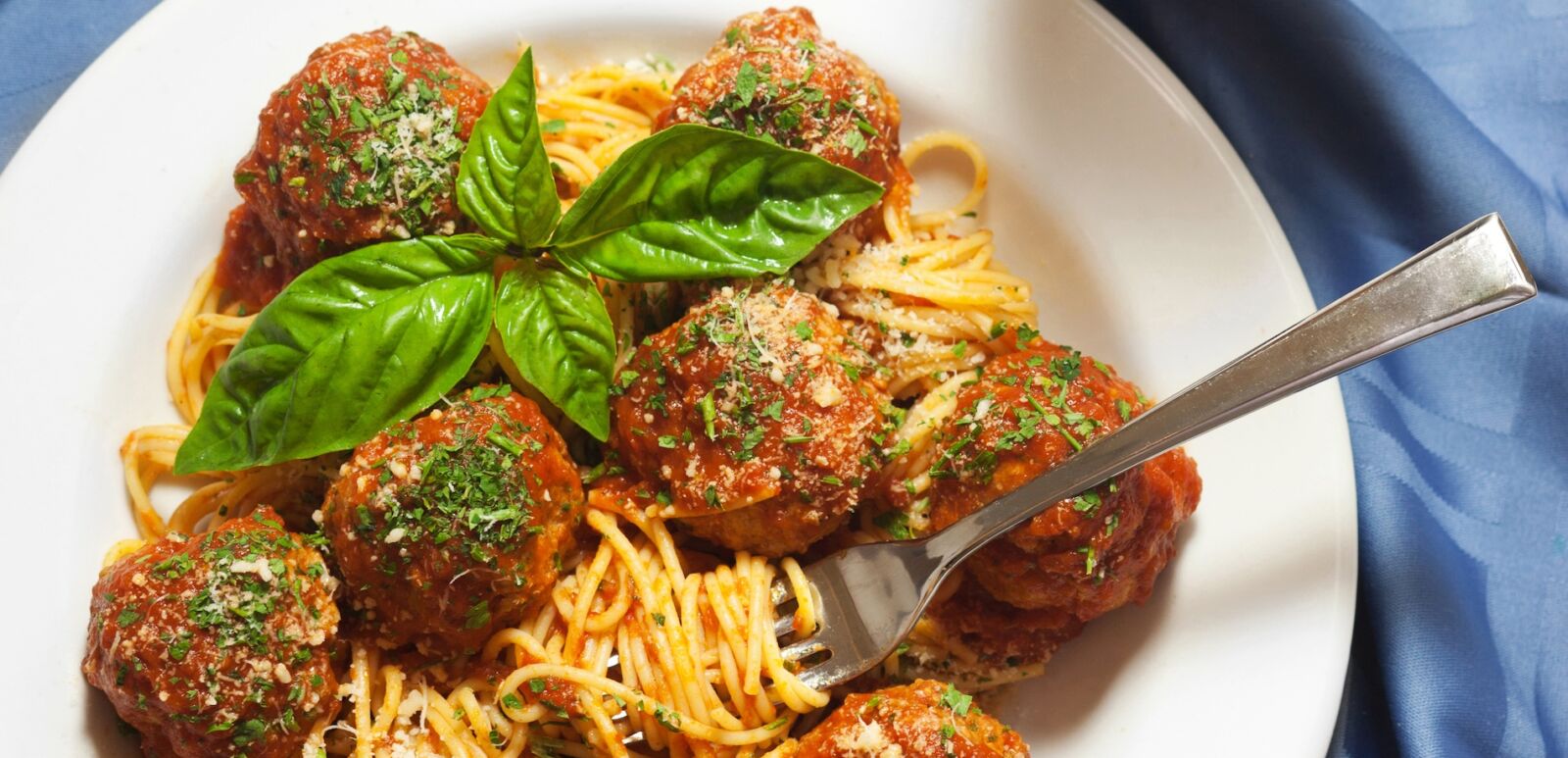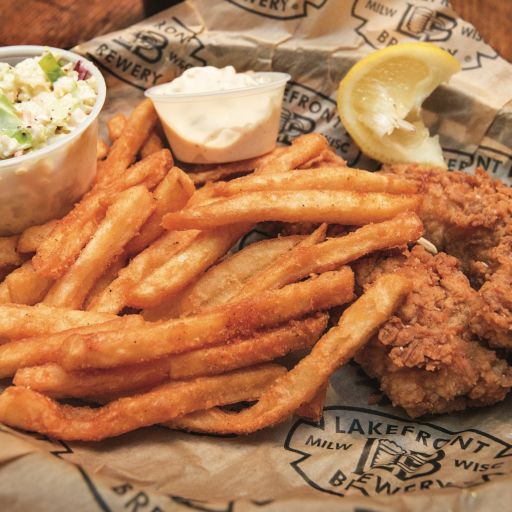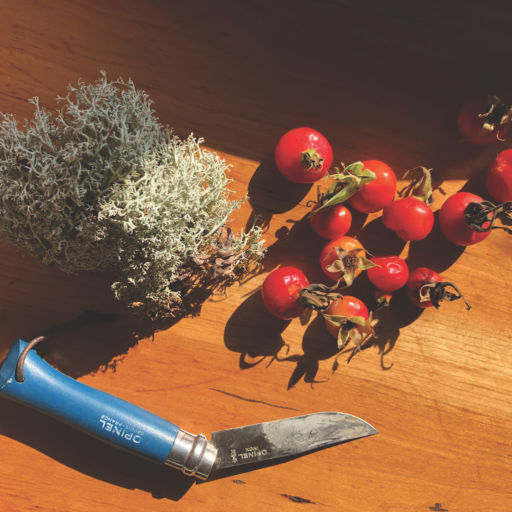If the red sauce-splattered walls could talk in this small two-story building in the heart of Midtown Manhattan, they’d have stories for days. Patsy’s Italian Restaurant, owned and run by the personable Scognamillo family, is a cultural touchstone in New York, a local icon akin to an Italian Empire State Building. Salvatore Scognamillo, or Sal to everyone who knows him, is the grandson of the late namesake owner and only the third chef in nearly a century of business. Though Patsy’s has served countless plates of meatballs and veal Milanese — along with two cookbooks and even a line of jarred sauce — it’s the stories that we’re most interested in today. Luckily, Patsy’s fans were happy to discuss memories of its humble beginnings, from ’40s-era New York to its status as Frank Sinatra’s favorite haunt, and its never-ending reputation as a place to see and be seen.
As the restaurant approaches its 80th anniversary — 80th! — of continuous business, Fifty Grande talked to employees including Sal, his father, Joe, and son, also named Joe; regular customers like actor Tony Danza, Sinatra’s right-hand man Tony Oppedisano and Dean Martin’s daughter Deana; as well as red sauce experts and others, to discuss what makes this charming Midtown spot so damn special. Hope you’re hungry.
THE PLAYERS
- Salvatore “Sal” Scognamillo, Patsy’s chef and grandson of the original owner
- Joe “Joe V.” Scognamillo, Sal’s father
- Joe “Joe A.” Scognamillo, Sal’s son
- Tony Danza, actor, singer
- Tony Oppedisano, Frank Sinatra confidant and friend, and author of “Sinatra and Me: In the Wee Small Hours”
- Deana Martin, singer and daughter of Dean Martin
- Ian MacAllen, author, “Red Sauce: How Italian Food Became American”
- Andrew Cotto, editor-in-chief of Appetito magazine

APPETIZERS
Tony Danza
“Patsy’s is special because of how long it’s been there: 80 years. It’s an institution.”
Tony Oppedisano
“It’s like time traveling and sitting down at a great restaurant, and very few exist like that anymore. When you walk in and get the greeting you get, it’s a very heartwarming place. There are very few like them in the world.”
Joe A.
“What I think makes Patsy’s so special is the fact that the family is always here and we truly care about our customers. They become part of our family.”
Andrew Cotto
“Patsy’s is the old-world Italian joint that reminds me of the upscale watering holes like P.J. Clarke’s and J.G. Melon. There’s such a great vibe, and it feels special to be in the room.”
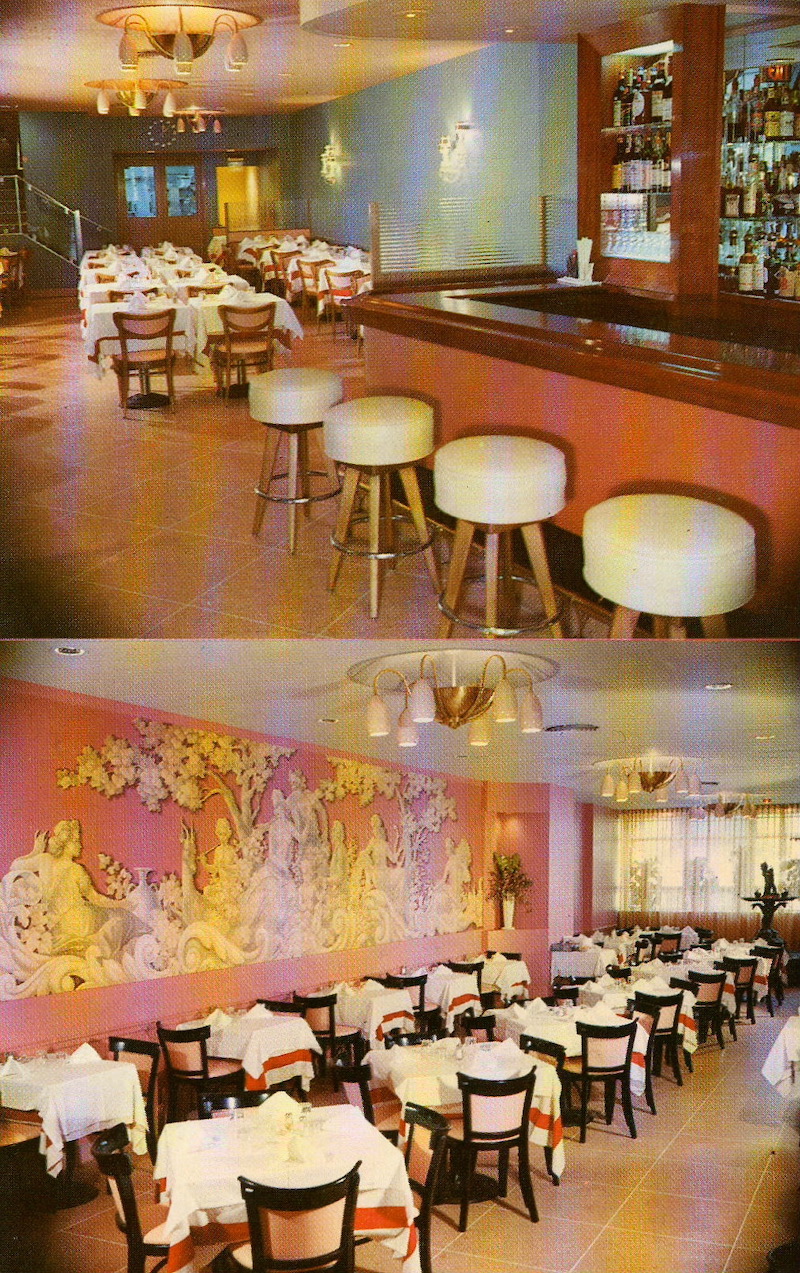
Deana Martin
“You know when you go to Patsy’s you’re getting the real deal. I’m getting up there and have been going for 60 years, at least. The food has been consistent and the camaraderie between everybody makes you feel good. It’s like going home.”
Ian MacAllen
“The red sauce tradition is a comforting force in a world that is in turmoil. Pandemic, war, inflation; we’re all confronting crisis after crisis, and there is nothing quite as comforting than shoving chicken parmigiana into our mouth.”
EARLY DAYS
A story of immigrants
Sal
“My grandparents were both from Naples, Italy. My father was the first person born here; he was born on Mott and Kenmare [in New York’s Little Italy]. If you had that real estate today, you’d be good!”
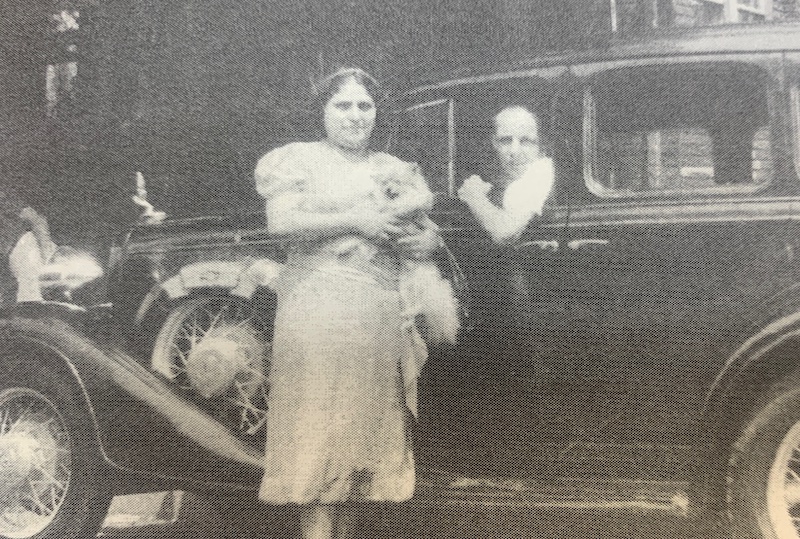
Ian MacAllen
“Patsy’s opened during the golden age of the red sauce joint, a period straddling two decades either side of World War II, when Italian American food was still growing in popularity, but before Americans were seeking out what would come to be known as ‘northern’ or ‘authentic’ Italian cuisine.”
Joe V.
“I have such great memories of those early years. I just wish I could have recorded them down each and every time. You’d have the biggest book in the world, next to the Bible.”
Ian MacAllen
“To appeal to a wider audience, to move beyond the Italian immigrant community, the earliest Italian American restaurants became known for having better value — lower cost, generous portions — than restaurants serving French cuisine.”
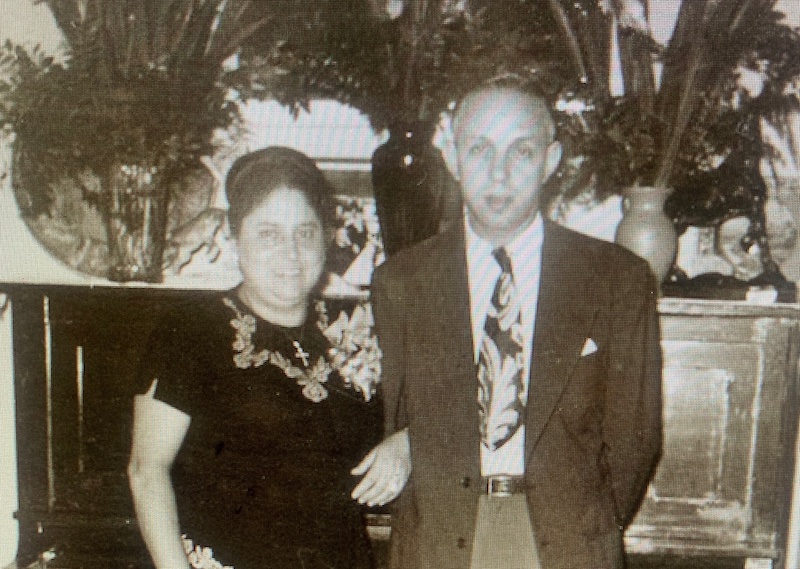
Sal
“My grandfather had a restaurant two years before Pasty’s called The Sorrento on 89th Street and Eighth Avenue. He was there between 1942-1944 and had a partner. They had a disagreement, though I’ve never heard of Italian people fighting [laughs]. He decided to open up on 56th Street between Eighth and Broadway and was there from ’44 to ’54, when he bought the building next door and moved there. He had the building rebuilt and the architect, named Jack Stern, threw 50 silver dollars in the foundation of this building and said, ‘This way, you’ll always have money.’ 50 dollars back then was a lot!”
Joe V.
“Back then everybody wore jackets, ties and hats. There was no air conditioning, but there were big fans in the dining room. And everybody was so well conducted. People were beautiful, respectful.”
Sal
“My father worked here 75 years, and he retired in 2019. He’d recall how difficult it was during World War II. A lot of times you couldn’t get certain things like salt, sugar or veal. They struggled like any business, but he developed a following. His first customers were musicians and had a lot of people come in from Broadway. It’s a great location, between the theaters and Carnegie Hall.”
“GASP! THERE HE IS…”
A cast of characters for customers
Ian MacAllen
“By the 1930s, many of the Italian American foods we think of today had come into existence, dishes like spaghetti and meatballs and veal parmigiana. However, Italian food was still considered an ethnic cuisine by many Americans of northern European descent. Garlic was offensive to many, and pizza was more or less unknown outside of ethnic enclaves. During this time we also start seeing average Americans worship Italian Americans like Joe DiMaggio and Frank Sinatra. They were heroes to the average person, but also had Italian heritage. It represented a shift in status for Italians in America.”
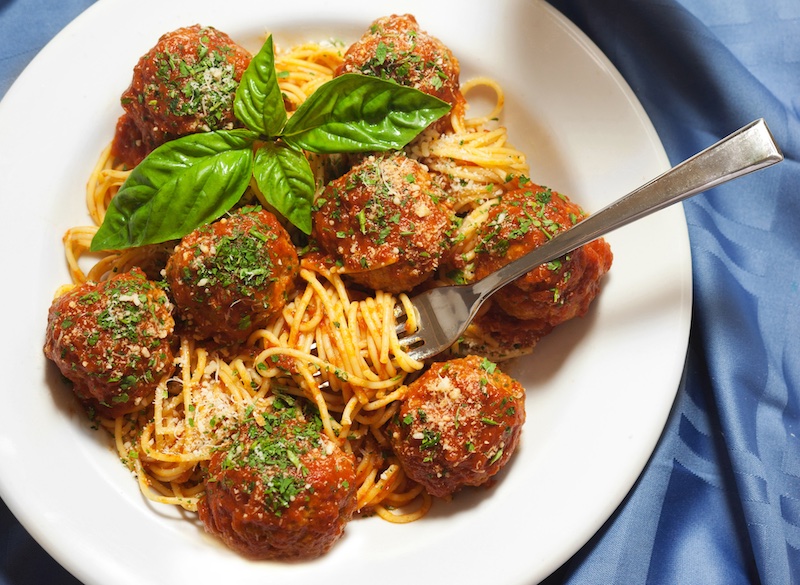
Joe V.
“There’s probably a thousand people I can name who came in during the old days. Al Jolson, Eddie Cantor, Mae West, Jimmy Durante, Fanny Brice. They were all playing on Broadway and they’d stop in because my father made the greatest friendships with these people. He took good care of them.”
Deana Martin
“I’ve been going to Patsy’s for years and years and years. I always go whenever I’m in New York with Tina and Nancy [Sinatra]. I don’t think there’s a table I haven’t sat in at Patsy’s throughout all these years. My favorite is the one down on the corner by the stairs. I think my first time was when I was 10 or 11, because it was around the first time I went to the Sands Hotel to see my dad. It was so exciting and everybody was so friendly. But I have to say, whenever I went anywhere with my dad, Uncle Frank and Uncle Sammy, everybody was very friendly. Whenever I’d walk in with my dad, they’d go, ‘Gasp! There he is…’ They wouldn’t come up and bother him, but they couldn’t believe Dean Martin just walked in.”
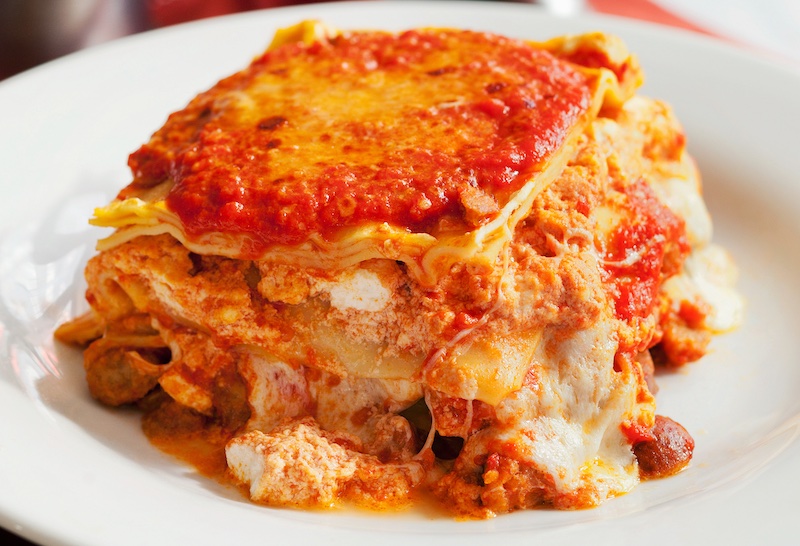
Sal
“Rosemary Clooney was also a frequent customer. My grandfather had a bunch of IOUs he’d keep in an old cigar box of famous people. What would happen is that working people who were trying to break into the business didn’t have a lot of money and my grandfather would say, ‘Don’t worry about it, pay me when you can. No problem.’ My father today says it like a joke, but if we kept those autographs, they’d be worth more than the money they owed us.”
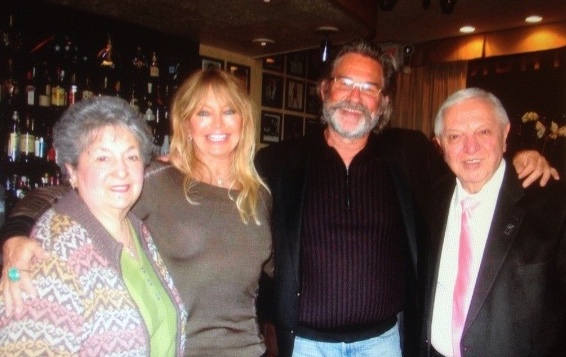
Joe V.
“Cary Grant…Don Ameche…James Cagney and his whole crew, like Pat O’Brien. I can’t even begin to remember half of them.”
Tony Danza
“I was staying at the then-named Rihga Royal Hotel on 54th Street. And when I checked in, I stopped at the bar. I knew the bartender and he greeted me by telling me that I had made Where magazine. I had no idea what Where magazine was, but there was an article in it about Patsy’s restaurant. Sal was asked what celebrity hadn’t been in and who would he like to come in, and he said, ‘Tony Danza.’ That night a few of us were getting in a taxi to go to the Eastside to have dinner at an Italian restaurant when I remembered the article. Patsy’s is on 56th so we walked around the corner, met Sal and the rest is history.”
Sal
“Just a couple days ago Baz Luhrmann came in. He had never been here before but his wife had picked the place for her birthday. He couldn’t have been happier.”
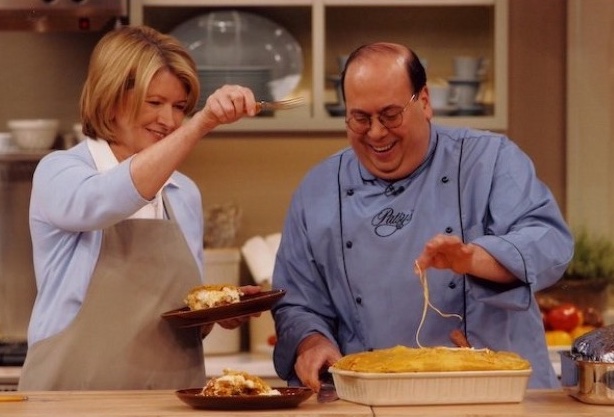
Tony Danza
“Sal had a book party there for my book about teaching, ‘I’d Like to Apologize to Every Teacher I Ever Had.’ My good friend Regis Philbin was there. I miss him.”
Sal
“Michelle Pfeiffer came in recently. And the fella who did Game of Thrones, George R.R. Martin. Stallone had a big party a couple years ago. When the movie ‘Creed’ came out, they had a big party for it upstairs. And Woody Allen and Harvey Keitel were here together; that was an odd combination.”
“When my grandfather bought this building, the second floor was the very first office for Atlantic Records, and some of their earlier songs were recorded here, like ‘Splish Splash’ from Bobby Darin.”

“IT WAS AN UNDERSTANDING”
Not all of Patsy’s fans were on the straight-and-narrow
Joe V.
“Mario Puzo based a character in ‘The Godfather’ off of people he met at Patsy’s. And in the book ‘The Godfather,’ they talk about Pasty’s, and he said it was on 46th Street because he said he didn’t want to get sued. But one of the people was my father’s uncle, my father’s godfather, the man who sponsored Patsy when he came to America. He ran Gen Oil, located on Grand Street. But in ‘The Godfather II,’ his company is called Genco Oil.
“[In the early days] on Sunday, everybody would come in with their wives and children, grandchildren. They’d have their dinner every Sunday: Tommy Lucchese, Gambino, Joe Colombo. Everybody loved my father and nobody dared to touch my father or family. It was an understanding; he had the biggest umbrella covering him. Though sometimes I’d be the liaison man. They wouldn’t be able to communicate with one another because of the law and they’d say, ‘Joey, go over and say so-and-so to so-and-so.’ The message would come back, and then sometimes they’d say, ‘Joe, give me his check. Make sure I take care of it.’
“Every Tuesday at 5 o’clock for years, Frank Costello would hold court at the bar. By 6 p.m., my father would take his food order. By 6:30, the food would be on the table and he’d sit down at his usual table. A lot of people came in paying tribute to him. I wasn’t nervous about it. We’d prepare the food the way he was supposed to. The same food he got, everybody else got. He just wanted fresh and good, and that’s what we gave everybody. My dad was a stickler for that sort of thing.
“Many years ago, my father was called and someone said, ‘Do not send your children to school until I tell you. Let them stay in the house; do not let them leave the house.’ So my father, without questioning, did that. We missed school for two or three days. Then he came around” ‘It’s okay; your kids can resume your normal life. They were going to kidnap your baby daughter. But you don’t have to worry about those two guys anymore.’ They wanted the money. My father started a business and he had money. Anybody who had money, they’d try to shake them down. So they would have held my younger sister for ransom. That was a common thing, it was called the Black Hand.”
“One night I was standing outside in the summer around 5:30 or 6 p.m. I was in my whites and just needed a breath of fresh air. I noticed someone a couple doors down pull back, fast! I didn’t like when I saw that. It was a guy I knew. I said, ‘What are you doing here?’ He said, ‘Oh nothing, Joe, I was just in the area.’ I said, ‘Don’t play games. What are you doing here?’ He said, ‘Joey, I have a job to do.’ I said, ‘Who?’ He said, ‘Somebody in your restaurant.’ I said, ‘You don’t do anything in my restaurant and you don’t do anything outside my restaurant.’ I made sure he got in his car and they left.”
Sal
“And that particular guy was killed two weeks later.”
“WHAT CAN I MAKE FOR YOU TONIGHT?”
Hungry yet?
Joe A.
“Ben Stiller wrote the foreword for our second cookbook, and he recalled how my great grandfather Patsy would say to him when he used to come in as a little boy, ‘What can I make for you tonight?’ And how my grandfather Joe, who I’m named after, asked the same question to Ben: ‘What can I make for you tonight?’ And how my dad Sal asked the same question: ‘What can I make for you tonight?’ And Ben once said to me, ‘I can’t wait until you’re old enough and you’re working here and you can say to me, “What can I make for you tonight?”’”
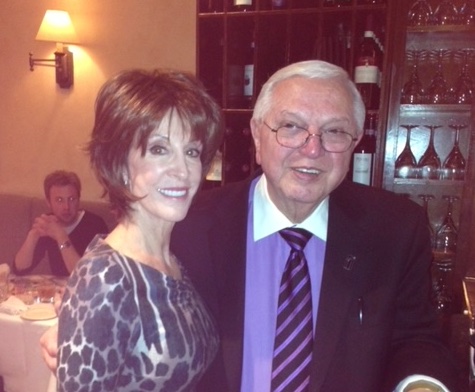
Deana Martin
“I don’t order off the menu. Sal or Joey would come over and ask me, ‘What would you like?’ I’d say, ‘I think I’d like a little veal piccata today.’”
Tony Danza
“I love Sal’s meatballs. But I think my favorite is the lobster fra diavolo.”
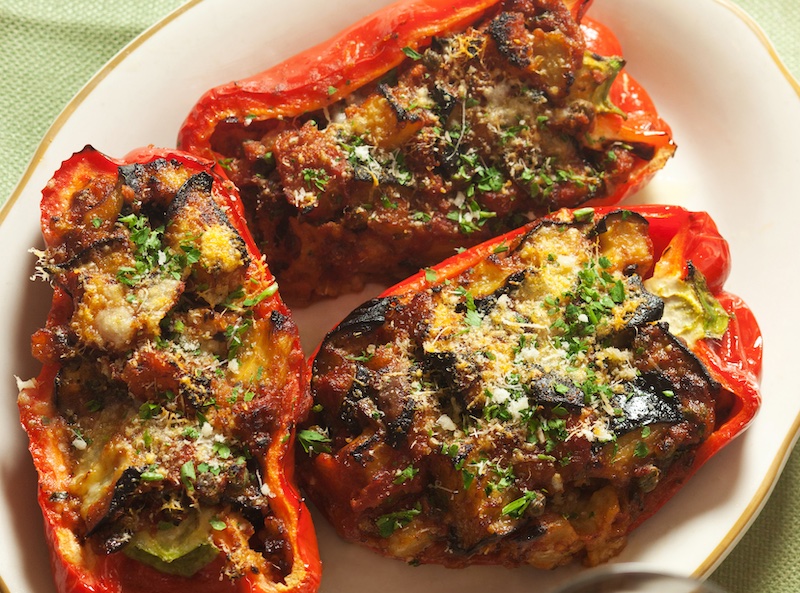
Joe A.
“Clearly far and away my favorite dish is pasta rigatoni with the meatballs. I can eat that every single day.”
Andrew Cotto
“Back in my corporate days, I always took my clients there who were in town visiting, even though I lived on Mulberry Street, because it was the ultimate New York experience and the food was so amazing. I’d let my guests order what they wanted, but we had to start with fried calamari.”
Deana Martin
“I like the grilled salmon. For me, it was fantastic. But I have a little bit of an argument with Sal over the pasta e fagioli. He puts in a marinara sauce and that’s not the way my grandmother taught me how to make it. I’ve even had an argument with Sophia Loren about this. She puts in red beans. You can’t put in red beans!”
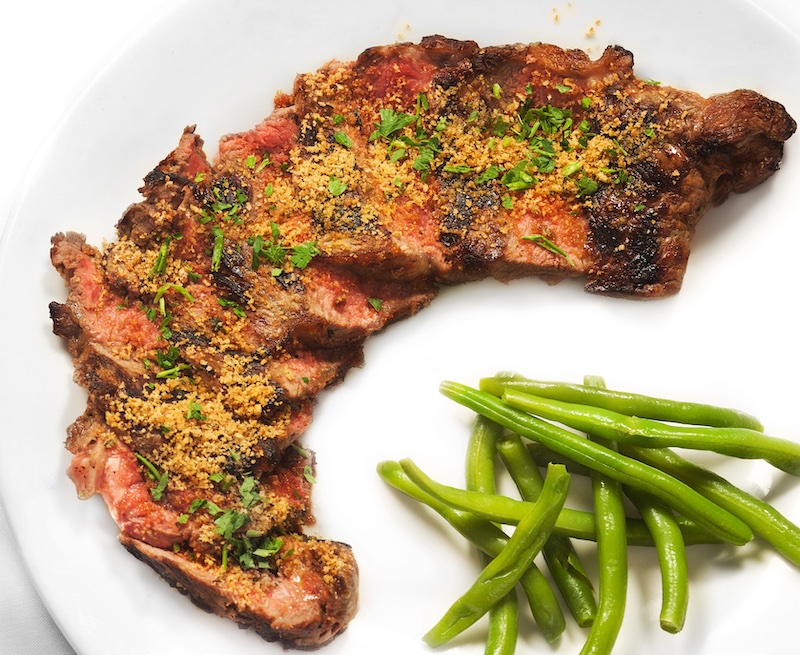
Joe V.
“I love the lobster fra diavolo. I love the steak pizzaiola. But what is there not to like at Patsy’s?”
SINATRA
Everybody has a story about Patsy’s biggest fan
Sal
“We had the biggest public relations person in the world: Frank Sinatra. To this day there’s not a day that goes by when someone says, ‘Oh, Sinatra liked this place and that’s why we’re here.’”
Ian MacAllen
“Frank Sinatra helped make Patsy’s a destination in the Theater District, especially among celebrities.”
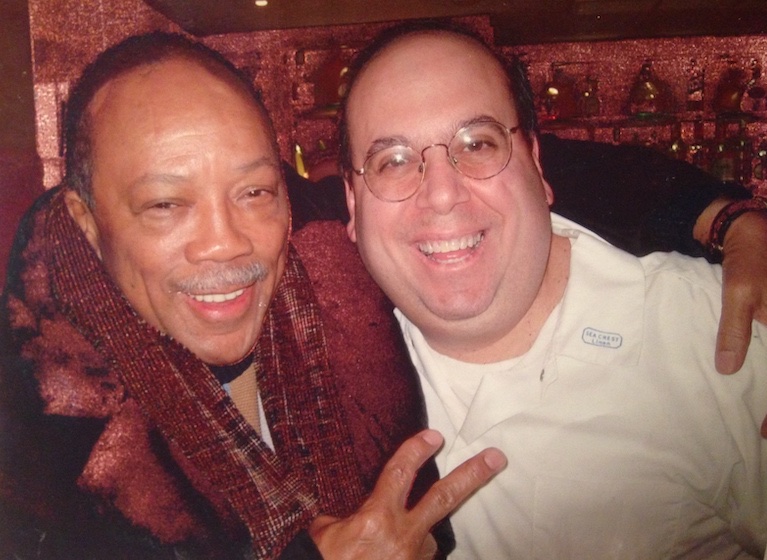
Tony Danza
“Of course, the fact that Frank Sinatra hung out there. I love to rub the shoe of the statue of Frank Sinatra on the bar for good luck.”
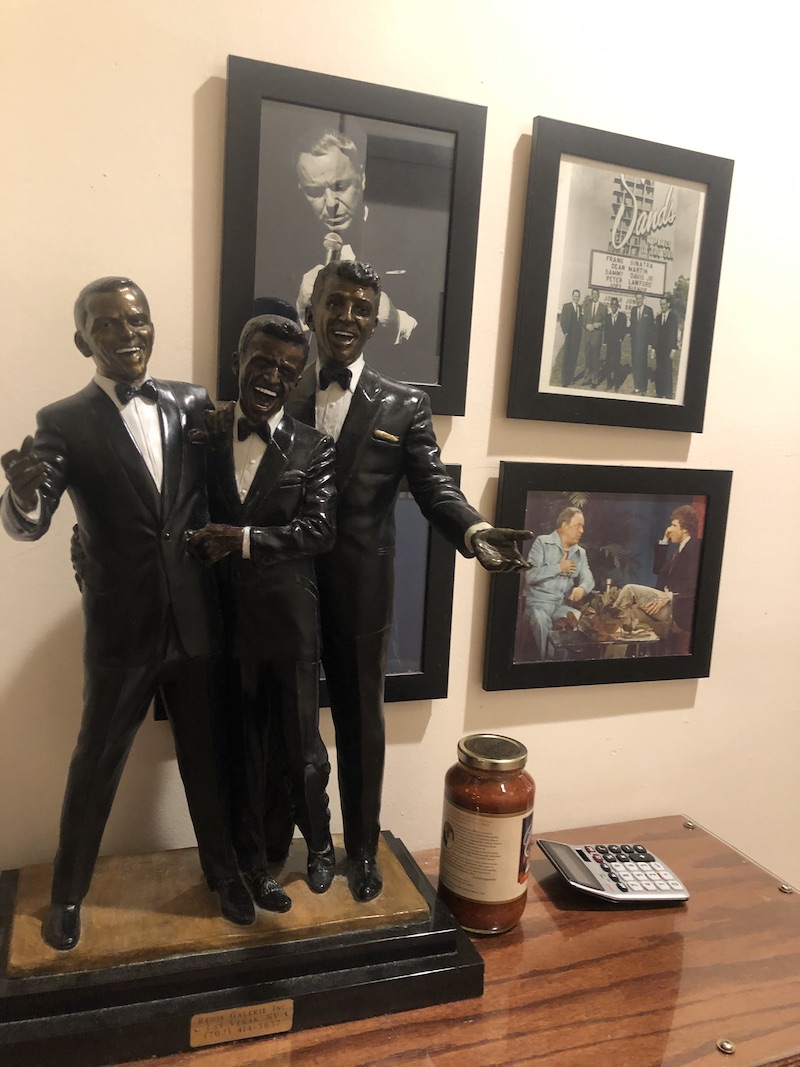
Sal
“Michael Bublé started coming in 1998. He’d say, ‘If it’s good enough for Frank, it’s good enough for me.’”
Joe V.
“My first time meeting him was backstage at the Paramount Theatre. I was delivering food. My father used to prepare a big pot of beans and macaroni, wrap it all up and I’d carry it over. I’d go backstage and the guys were all playing pinochle: Jimmy Dorsey, Tommy Dorsey, Harry James, Buddy Rich.”
Tony Oppedisano
“For Frank, Patsy’s was like stepping back in time. Because the food is so authentic and it’s from an era that’s bygone.”
Sal
“By the early ’50s Sinatra was down and out and would come in by himself. He’d point to people and say, ‘They’re my fair-weather friends; they only come to me when the sun is shining.’ It was the day before Thanksgiving when he said, ‘Patsy, book me a table for one tomorrow.’ He didn’t have the heart to tell him they were closed, so he said, ‘Sure, Frank.’ The next day he had a couple of the waitstaff come in with their families. He looked around and said, ‘It’s a little quiet over here.’ Later on in life he found out he opened it just for him, and he never forgot it.”
Tony Oppedisano
“Frank would usually order the veal Milanese. He loved it. Fried it in fresh breadcrumbs; it’s completely different because you’re seasoning it yourself.”
Joe V.
“I was a young boy when I once approached a singer, Johnny Desmond. My father introduced me to him and I was so in awe. He started talking to me and asked me, ‘Who’s your favorite singer?’ And I said, ‘Frank Sinatra!’ So when I asked for his autograph, you know what he signed? ‘Frank Sinatra.’”
Sal
“I lost my mom this past summer. But when she was introduced to Frank Sinatra, he said, ‘Whenever you want anything, don’t ask your husband. Ask me.’ She’d say, ‘Those blue eyes…’”
Joe V.
“Frank eventually became a very good close friend. I’ve spent many a time with him up in his apartment, on his boat. I was always there for him. He used to say, ‘Joey, I want you no more than four feet away from me.’ And whenever he was in, that’s where I was. He said, ‘You stay right here. I want to be able to extend my arm and touch you.’ So that’s what I did. He used to show up on a Saturday afternoon, and back then there was no traffic on a Saturday afternoon in New York. That’s how far back I go. He would say to my father, ‘Patsy, can you take a broom and make it into a stick? We need it to play stickball.’ So my father took one broom, and he’d always keep it on him, otherwise he’d go through brooms every week. He’d go outside and the manhole cover was second base, we were first base and across the street was third base and all those Rat Pack guys would play stickball outside.”
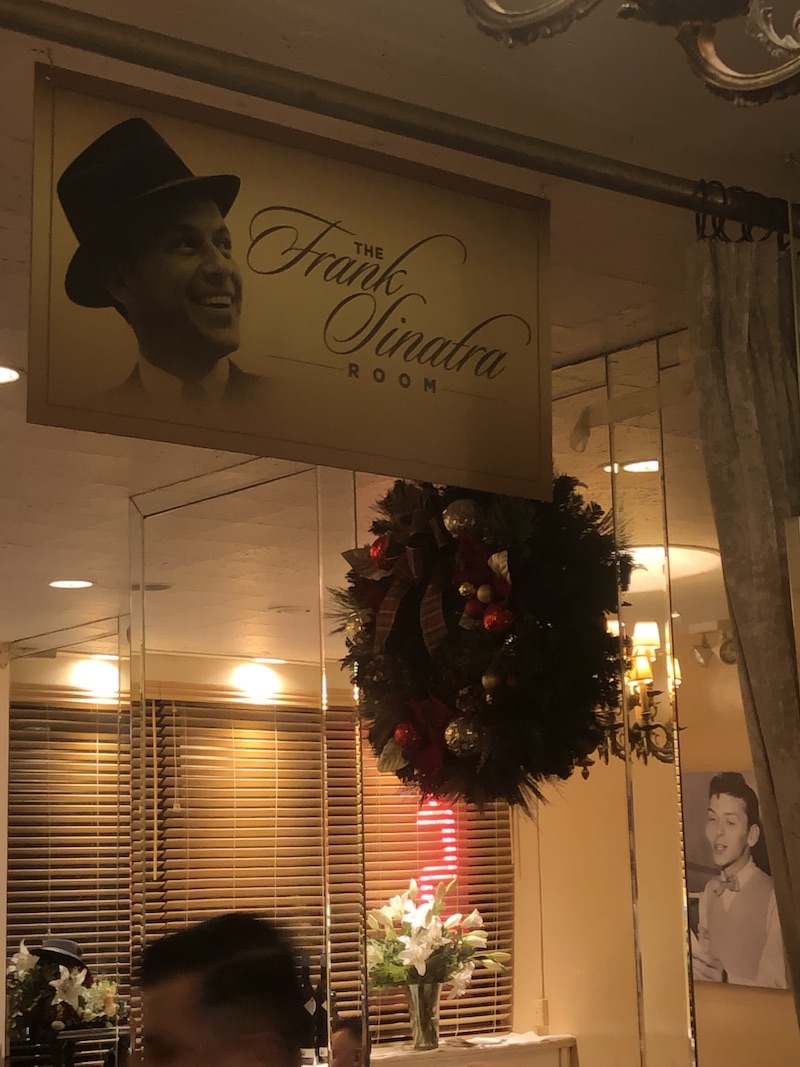
Sal
“I was 13 years old when my father asked me if I wanted to meet Frank Sinatra. He always came in through a separate entrance and I had the keys to open the door, but I was so nervous and shaking I dropped the keys on the floor. He was so reassuring, ‘Son, it’s okay, don’t worry about it.’ Because he knew what he did to people.
“I was 15 years old in 1977 when New York Yankees manager Billy Martin called up with a reservation for 50; the whole team wanted to celebrate. When he was there he pointed to the room divided by curtains and said, ‘We always sit there, Joe.’ And he didn’t mean it this way, but he said, ‘I got that saved for someone really important.’ Later, Billy came face-to-face with Sinatra who said, ‘What the hell are you doing here?’ Because the Yankees had just beaten the Dodgers and Frank was close with the Dodgers. Frank had agreed to say hi to Billy Martin but said he was tired because he just flew in from the West Coast. So, my father told Billy, who jumped on the table and said, ‘Come on guys, we’re gonna meet Frank Sinatra!’ One by one, they went in, and Sinatra couldn’t have been nicer. It took an hour. They both ate their dinners and when Sinatra left they gave him a standing ovation. Billy said to my father, ‘What a night! Please bring me the check.’ My father hesitated and said, ‘I’m sorry Billy, I can’t do that. Frank picked it up for you.’”
Tony Oppedisano
“One day I was in New York on my own, doing business for Frank, and I went into Patsy’s by myself for dinner. We had not been at Patsy’s for maybe a year and a half, since we all moved to California. Joe came over to the table, sat with me and asked how things were going and said, ‘I really miss having you guys come in.’ I said, ‘I can understand that, Frank misses it too. This is one of his favorite restaurants anywhere.’ He said, ‘I appreciate hearing that.’ I said, ‘By the way, do you have a phone I can use?’ A couple minutes later, a waiter brought a phone over to the table. I called the house where I knew Frank was, got him on the phone and spoke to him about the conversation I had with Joe. He said, ‘Well, where is he? Call him over to the table.’ I said, ‘Hey, Joe, come on over here. Somebody wants to talk to you.’ When he heard Frank’s voice, his eyes welled up with tears. They spoke for 20 minutes, and when they hung up he gave me the biggest hug and he said, ‘I’ll never forget you did that for me.’ It really meant a lot to him.”
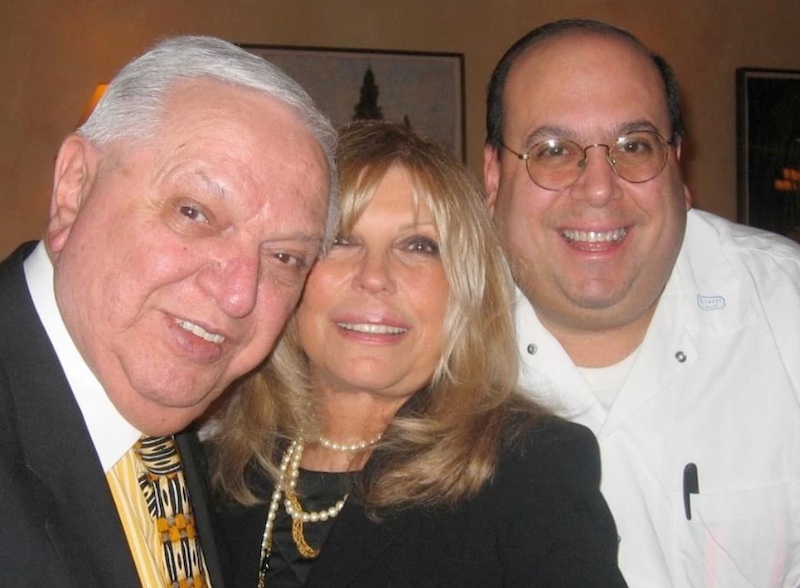
Deana Martin
“We did a 100th birthday for Frank at Pasty’s a couple years ago.”
Sal
“Recently his granddaughter AJ was here, who’s Nancy Sinatra’s daughter. And AJ had her daughter in. She’s such a sweet, sweet little kid, and it melted my heart when she said, ‘I want to ask you a question.’ I said, ‘Sure, sweetheart, anything.’ She said, ‘Can you make me the veal Milanese like my great grandfather had here?’ I could have cried.”
DESSERT
Sal
“I took television and film in college and worked as a cameraman for a few months but couldn’t get a job. My friends would tease me, ‘Aren’t you just going to work at the restaurant?’ But I had never even thought about it. My father said to me, ‘Do you want to cook?’ I said, ‘Okay, why not? Let me give it a shot.’ It took about a year of training because I didn’t know the difference between parsley and basil, but it was the school of hard knocks. I took over 39 years [ago] this January.”
Joe A.
“Following in my family‘s footsteps is something that I’ve wanted to do for so long as I can remember. Of course, there’s a lot of pressure to make sure that everyone’s happy, but it’s something that makes me want to strive that much harder, to make sure everyone enjoys the same experience they did with my great grandparents, my grandparents and my parents.”
Tony Oppedisano
“Patsy’s should really become a National Historic Landmark. And someone should lead that parade to make it happen.”
Deana Martin
“I always get Patsy’s sauces at home. Why take the time to make the sauce when it’s already there and it’s so good?”
Sal
“There’s one word that comes to mind: authenticity. That sticks in my head. It’s that old-school real feel. We’re still here and we’re doing what we’re doing. We’re not a trattoria; we’re a southern Italian red sauce restaurant.”
Joe V.
“It’s an honor to see it still going. I have my fourth generation in there and they do a beautiful job: Sal and his wife, Lisa. I can’t begin to tell you. You’ll see it yourself.”
Tony Oppedisano
“It’s more than a restaurant. It’s a family rendezvous spot. Once they put their arms around you, you’ll feel warm for the rest of your life.”
Sal
“When people ask me why we’re successful, [it’s] the consistency. I’d greet a steady customer for 30 or 40 years and they’d say they know what the food is going to taste like before they sit down. Those are the things that warm my heart, as I hope I’m doing proud for my grandfather.”
Ian MacAllen
“Red sauce joints are exploiting our sense of nostalgia. Many closed in recent years, and so the ones that are still operating, that have survived for 50 or 60 or more years, are the best in show.”
Sal
“When she wrote the foreword for our book, Nancy Sinatra said, ‘Patsy’s is more than a restaurant, it’s a touchstone.’”
Deana Martin
“Fabulous memories….”


